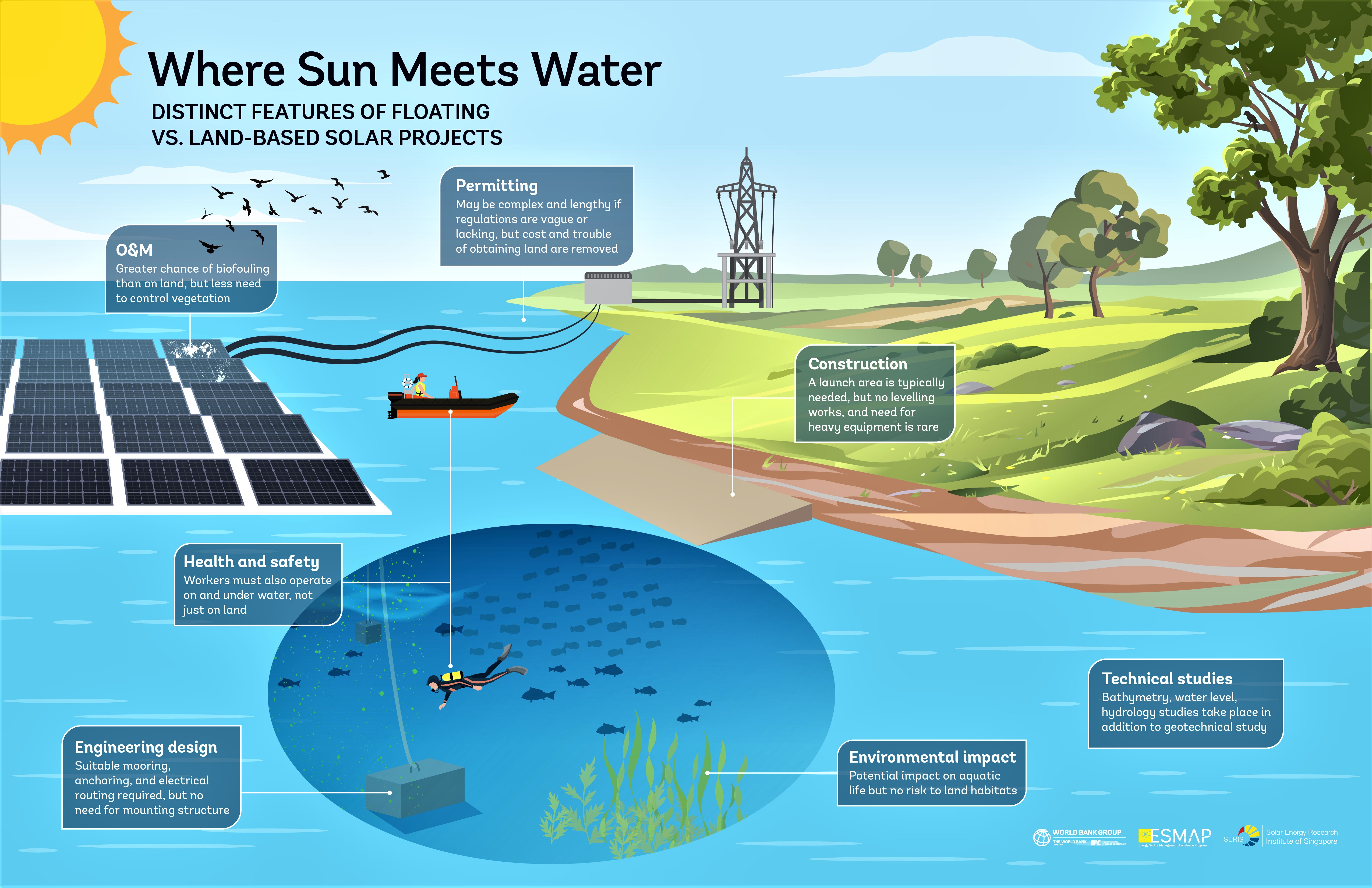Publications
Floating solar photovoltaic (FPV) technology is considered commercially viable, given the number of largescale projects that have been implemented. Challenges to its deployment remain, however, including the lack of a robust track record; uncertainty about costs; uncertainty about the environmental impact; and the technical complexity of designing, building, and operating on and in water (especially electrical safety, anchoring and mooring issues, and operation and maintenance). This handbook provides developers, utilities, contractors, investors, regulators, and decision makers with practical guidelines on FPV projects. Most of the handbook focuses on technical aspects relating to developing and operating FPV projects; some sections focus on commercial and legal aspects. Most of the observations are made for inland water bodies or near-shore coastal FPV installations. Many observations incorporate learning and opinions from the industry, but they are also based on the experience from the 1 megawatt-peak (MWp) floating solar testbed in the Tengeh Reservoir in Singapore. The testbed has a comprehensive monitoring system that tracks more than 500 parameters in real time, ranging from electrical to meteorological and module-related factors. Given the early stage development of the technology, this handbook cannot answer all questions about FPV. Further studies and field data analysis are needed to better understand some of the risks of FPV systems, especially their environmental impact and long-term performance. All recommendations provided in this report are based on past and current experiences, which are limited to several years of operating data for most projects. A longer operating lifetime of FPV installations will lead to new and improved recommendations and best practices; new developments in technology,testing, certification, and equipment/materials deployed are likely to evolve as the industry grows and diversifies. An active dialogue among all stakeholders, public and private, is required to further the global understanding of FPV technologies and the development of well-designed projects while minimizing possible negative environmental and social impacts. Through this handbook, the World Bank Group, the Energy Sector Management Assistance Program (ESMAP), and the Solar Energy Research Institute of Singapore (SERIS) hope to contribute to this goal and to disseminate lessons learned from early projects.

World Bank Group, ESMAP and SERIS. 2019. Where Sun Meets Water: Floating Solar Handbook for Practitioners. Washington, DC: World Bank. http://documents.worldbank.org/curated/en/418961572293438109/Where-Sun-Meets-Water-Floating-Solar-Handbook-for-Practitioners